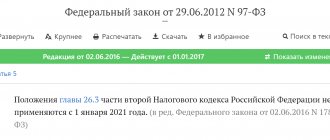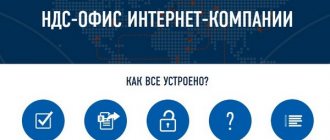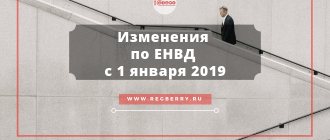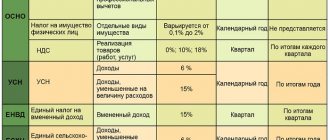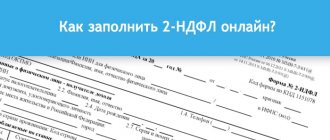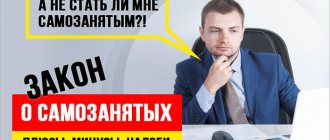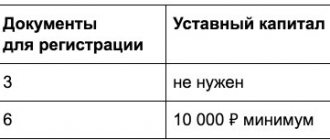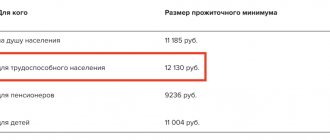According to estimates by the Russian Ministry of Finance, this innovation will increase budget revenues by 620 billion rubles per year. Value added tax in Russia is paid by legal entities at all stages of production and sale of goods or services. The amount of tax paid is included in the final price of products or services, so that it is actually paid by the end consumers. The previous VAT rate of 18% has been in effect since January 1, 2004.
The decision to increase VAT to 20% is the least painful for people and the economy compared to other options for increasing budget revenues being considered by the government, says Russian Prime Minister Dmitry Medvedev.
Thus, according to him, the introduction of a sales tax from 3% to 5% would provoke significant inflation and reduce real incomes of the population, or maintaining the VAT at 18% while abolishing VAT benefits would hit the poorest, most vulnerable segments of the population.
VAT - what is it, who is obliged to pay it, who is exempt from paying it
VAT (value added tax) is an indirect tax on any service or product that is sold by an organization at a price that is at least slightly higher than its cost. VAT increases “automatically” at each level of resale. It is withdrawn to the state budget as the product/service is sold. The VAT rate of 20 percent is calculated based on the difference between the cost of the product and its selling price.
An indirect tax, which is VAT, unlike a direct one, is transferred to the end consumer. 0they should not be entitled to the full amount of the goods sold, but only the value added to it .
- Initially, in 1992, the maximum tax was 28%.
- In 2021 it is 18%.
- From the beginning of 2021, VAT will be increased to 20%.
This means that each stage of selling a product (transferring it from hand to hand) adds exactly this figure to its cost. Ultimately, the “final” buyer will pay for the purchased product at least 3 times VAT, which is “sewn into” the cost of the product/service.
VAT in Russia is required to pay:
- Individual entrepreneurs are individuals.
- Organizations (including non-profits) are legal entities.
- Exporters and importers of goods.
However, it should be understood that in fact, VAT falls on the shoulders of the ordinary buyer, since sellers “build it” into the final cost of the product.
The following categories of entrepreneurs and organizations are exempt from payment:
- Companies producing agricultural products. They are required to pay a single agricultural tax.
- People participating in the work of the Moscow Innovation Institute.
- Entrepreneurs and organizations that over the last three months have earned less than 2 million rubles from the sale of their products and services. In this case, they are allowed not to pay VAT for a year. Exception: companies selling excisable goods (cigarettes, alcoholic beverages, some cosmetics, etc.). The benefit is canceled if during the year the amount of 2 million rubles was exceeded for three months.
- Entrepreneurs who pay a single tax on imputed income for certain types of activities (UTII) and those who work under the patent system or simplified taxation system.
What is VAT spent on?
VAT is the main tax of the federal budget (not to be confused with the regional one). VAT provides a third of all revenues and is in second place after oil and gas revenues.
Federal budget money goes to social purposes: benefits, assistance to the poor, subsidies and benefits. VAT is spent on medicine, education, army and security, culture, youth policy, sports and state support programs, rehabilitation of the disabled, support for agriculture, environmental protection, camps and sanatoriums for children, maintenance of museums, scientific research, housing and communal services.
To put it very simply, when we pay VAT on the price of goods and services, we all chip in a little for common purposes.
Raising VAT by 20% - how does the government justify the need for such a jump?
The Russian government says that the 2% tax increase will bring more than 600 billion rubles to the state treasury. Russian economists have calculated that in 6 years this figure will grow to 2 trillion rubles, and together with the gross domestic product (GDP) it will increase to 6 trillion. At the same time, the influx into the budget will be guaranteed, because it is almost impossible to evade this tax.
Deputy Prime Minister Tatyana Golikova exhaustively argued and explained the need to increase VAT to 20 percent. She said that the government even discussed the figure of 22%, but was afraid of the risk of a large increase in inflation. Ms. Golikova believes that an increase in pensions from the beginning of 2021 will be able to fully compensate for the tax change.
A little history of VAT
This tax began in 1992 after the abolition of the sales tax. During the year, the rate was 28% - a fairly heavy burden for business. In 1993 it was lowered to 20% and at this rate it existed until 2004. To improve business management, it was again lowered to 18%. It will remain at this size until the first quarter of 2021. As we see, during the twenty-six-year existence of the VAT, the tax has only decreased.
In 2021, a two-stage increase in housing and communal services tariffs is possible: in January and June
The question arises, why did the increase in the tax levy to 20 percent affect the personal VAT tax? Because it is easier to track its accrual and return the underpayment to the treasury. It is considered a transparent fee that, according to European economists, has no analogues.
The VAT increase is caused by various reasons. According to the country's economists, a slight increase in tax will lead to a budget replenishment of 620 billion rubles .
For your information! A year ago, the Ministry of Health spent half this amount on federal expenditures to improve the population's health.
Pros and cons of the change
Statisticians collected the opinions of various people into one list: ordinary people, entrepreneurs and economists. What will the VAT increase to 20 percent lead to, in their opinion?
First about the cons:
- Inflation will certainly rise.
- A VAT rate of 20 percent will hit the pockets of ordinary consumers hard, as prices for goods and services will rise by about 10%.
- Consumer demand for retail goods will decrease due to high prices.
- Product quality will become lower. This will happen because producers will have to introduce austerity regimes to curb price increases.
- The “shadow economy” will grow because small and medium-sized businesses will have to fight even harder for “survival” in the arena of market competition.
Speaking about the advantages of increasing the tax , we can only say one thing: the 600 billion that will replenish the treasury will go to social needs (at least, I would like to hope so).
Dmitry Medvedev also says that the increase in VAT should help the Russian government implement the May presidential decrees. Whether he is right or wrong, time will tell.
What is changing in the Federal Law?
Main changes to be considered:
- on increasing the base VAT rate from 18% to 20%
- on maintaining the right to deduct VAT amounts paid when purchasing goods, works, services through subsidies or budget investments for organizations in the automotive industry for the period until January 1, 2021
In addition, at the meeting ideas were voiced for introducing some tax breaks, namely:
- on reducing the total tariff of insurance contributions to state extra-budgetary funds from 34% to 30%
The Government of the Russian Federation proposed to establish on a permanent basis the current 30% level of insurance contributions to the Pension Fund, Social Insurance Funds and Compulsory Medical Insurance. “It is proposed to finally fix on a permanent basis the currently applied preferential tariffs for insurance contributions to state extra-budgetary funds (to the Pension Fund, social insurance funds and compulsory health insurance) at the level of 30%. That is, to fix this value completely,” Russian Prime Minister Dmitry Medvedev said during today’s Cabinet meeting.
- refusal to use such an institution as consolidated groups of taxpayers, in connection with the abolition of the requirement to control transfer prices within the country (the liquidation of such an institution will be carried out gradually and will be completed by 2023).
If the initiatives under consideration are adopted, the Cabinet promises to fix new basic parameters of the tax system for the next six years.
The bill contains not only an increase in VAT, but also a reduction in insurance premiums. This was discussed at a government meeting, but amid the VAT increase it went unnoticed. What exactly is the government offering?
About VAT:
- From 2021, the basic VAT rate will be increased to 20%. Now it is 18%.
- The VAT rate on socially significant goods will not change and will be 10%. This applies to food, children's products, medicines, medical devices and books. Many families will not be affected by the VAT increase.
- Some categories of goods and services will be exempt from VAT, as is the case now. For example, diagnosis and treatment, transportation of passengers, child care in kindergartens and teaching in schools. There is also a VAT rate of 0% - there are also no changes.
About contributions:
- The preferential tariff for pension insurance will be fixed. Now the 22% rate is valid only until 2021 - if the law is passed, then there will be no increase in contributions to 26%.
- If the annual salary is greater than the limit, contributions will remain at 10% of the excess. From 2021, there would be no need to pay contributions on some of the larger salaries, but everyone would have to pay more.
VAT may increase, but this will not affect everyone. The preferential contribution rate was temporary, but may become permanent. It's still just a bill, not a law.
What will the increase in VAT to 20 percent lead to in business?
Here's what leading Russian businessmen and economists say about this:
- Deputy Director of TsMAKP V. Salnikov claims that the main “burden” of this change will fall on the automotive industry, as well as on construction organizations. Only one thing will help these companies maintain their cash levels - raising prices. True, the purchase of real estate is not subject to this tax, but materials, equipment, tools, machines, etc. will become more expensive by at least 10%. Eventually, property prices will inevitably rise.
- One of the world's largest retail chains selling household goods and furniture will definitely increase prices for its products. The leading manager of this company thinks so.
- One of the leaders of the Association of Russian Travel Agencies, M. Lomidze, also notified that the cost of tourist packages in 2021 will increase by 5-10%. The VAT increase by 20 percent is to blame for this.
- A. Nazarov, co-chairman of Business Russia, said that 20% VAT is not a very good situation for business, although not critical. It will bring its own additional difficulties, which will still be solvable.
Many experts in the field of economics also say that such a tax burden as increasing VAT by 20 percent, as well as any other, does not make businessmen happier.
They all expected that the tax system in the country would remain stable, but now business would begin to “fever.” This will lead to a decrease in the well-being of Russians and an increase in the number of poor people.
VAT rate for transport services
VAT taxation of transportation services raises many questions. They are mainly due to the fact that certain conditions are required to apply the 0% VAT rate.
What are these conditions and what are the differences between transportation for which a 0% VAT rate can be applied and those that are subject to 20% VAT, read the article “What is the procedure for assessing VAT on transport services?” .
You will also find useful information on transportation taxation in the following materials:
- “The 10% VAT rate for air transportation will be extended”;
- “Until 2030, VAT on passenger rail transportation is zero”;
- “What is the VAT rate for transport forwarding services when transporting imported goods from the port of arrival in the Russian Federation to the destination?”.
What will an increase in VAT to 20 percent mean for the average consumer?
Most experts believe that prices for medicines and food will rise the most. VAT on these goods will approximately double. The only exceptions here will be products whose prices are administratively regulated. These are socially significant goods intended for gratuitous assistance, scrap metal, rough diamonds, religious literature, etc. Food in educational and medical institutions is not subject to this tax.
Analysts say that the increase in inflation that the additional 2% tax will inevitably cause will primarily hit Russia's most vulnerable residents. And this doesn't just apply to their wallets.
Due to the increase in value added tax, production volumes will decrease, which means that the number of jobs will also be reduced. Many Russians will be forced to look for another job. People will have less entertainment, buy books, go to fitness or theaters.
As for loans, it will be increasingly difficult to take them, to say the least. The Central Bank of the Russian Federation is likely to tighten monetary policy. Banks will increase interest rates on loans, and requirements for borrowers will become even stricter.
VAT rate in Russia in 2019-2020 for food and book products
If you ask an accountant: “What goods are subject to VAT at a rate of 10%?”, then most likely the answer will be the following: products and books. On the one hand, this is true, but even in such an obvious situation there are legal restrictions.
To avoid getting confused, read the articles:
- “What is the VAT rate on food products during their production and sale?”;
- “At what VAT rate should books be taxed?”;
- “Is it possible to apply a 10% VAT rate when selling a set of printed products with electronic media?”
Betting table 2021
The table below contains the new VAT rates that will apply from 01/01/2019:
| Bid | Application area |
| 0% | · Sale of goods intended for export, passing through customs clearance. |
| · International shipping. | |
| · Operations carried out by organizations for the transportation of oil and its products. | |
| 10% | · Sales of food products. |
| · Sales of children's goods. | |
| · Sales of medicines and medical products. | |
| · Sales of printed and periodicals related to the field of education and culture. | |
| 20% | All other transactions that do not fall into the previous two categories |
VAT calculation and tax recording
When calculating tax, it is important not only to choose the right rate, but also to correctly determine its amount and correctly reflect tax data in accounting.
These articles will help you with this:
- “What are the formulas for calculating VAT (calculation and allocation)”;
- “How to correctly separate VAT from the amount”;
- “How to correctly calculate VAT on the amount (transactions)”.
Tax legislation is subject to constant change, so no organization can be completely sure that it applies a VAT rate to its goods or services that corresponds to the latest legislative trends.
In order to avoid problems with tax legislation, it is necessary to constantly monitor changes in regulations and clarifications to them. “Rate (VAT)” will help you with this .
Results
Cases when estimated VAT rates are applied are described in clause 4 of Art. 164 Tax Code of the Russian Federation. Estimated VAT rates are determined as the ratio of the VAT percentage rate to the tax base, taken as 100 and increased by the percentage rate. In invoices, the estimated rate is indicated in column 7 as 20/120 or 10/110 without indicating the % symbol.
Sources:
- Tax Code of the Russian Federation
- Decree of the Government of the Russian Federation dated December 26, 2011 No. 1137
You can find more complete information on the topic in ConsultantPlus. Free trial access to the system for 2 days.
